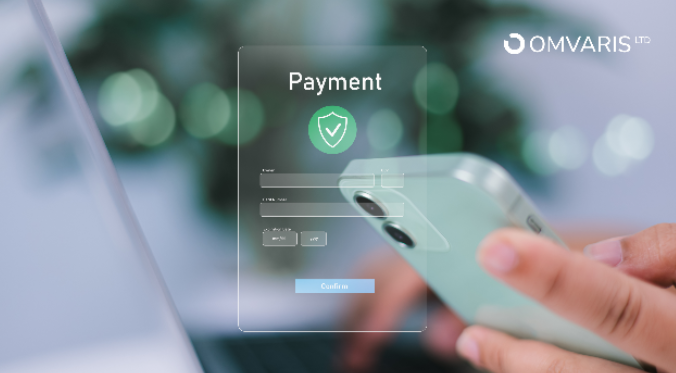In a world increasingly reliant on digital financial systems, safeguarding payment data has never been more critical. With cyberattacks growing in complexity and frequency, organizations must adopt technologies that can protect users’ most sensitive information. End-to-end encryption (E2EE) is one such technology, and it plays a foundational role in securing financial ecosystems across industries.
Omvaris Limited, a company focused on digital systems and secure infrastructure, provides a deep dive into how end-to-end masking protects payment data and why it is a non-negotiable element of modern cybersecurity protocols.
What Is End-to-End Encryption?
End-to-end encryption is a method of secure communication where data is masked on the sender’s device and only decrypted on the receiver’s device. No third party—including service providers, ISPs, or hackers—can access the data while it is in transit. In the context of payment systems, this ensures that transaction details, card information, and personal identifiers are completely unreadable to unauthorized actors during transmission.
Omvaris Limited emphasizes that the strength of E2EE lies in its architecture: even if a network is compromised, the encrypted data remains useless to attackers without the appropriate decryption keys.
Why Payment Systems Need End-to-End Encryption
Payment systems are high-value targets for cybercriminals. The reason is straightforward: they handle vast volumes of sensitive data, including credit card numbers, CVV codes, personal identification details, and authentication credentials.
According to Omvaris Limited, without end-to-end masking, payment systems are exposed to multiple vulnerabilities:
- Man-in-the-middle attacks: Interceptors can alter or steal data mid-transmission.
- Data breaches at the server level: Hackers who penetrate databases can exfiltrate unencrypted payment data.
- Internal threats: Employees or insiders can exploit protected data flows.
Omvaris Limited explains that E2EE prevents these threats by ensuring that even if data is intercepted or stored improperly, it cannot be read or used without the correct cryptographic keys—keys that are never transmitted along with the data.
How It Works in the Payment Landscape
To illustrate the mechanics of E2EE, Omvaris Limited outlines a typical digital payment process enhanced by encryption:
- Data Entry: A customer enters their card information on a secure interface (e.g., a website or mobile app).
- Encryption at Source: The payment data is immediately encrypted on the client-side before being sent over the network.
- Transmission: Protected data travels through various systems, including payment gateways and processors.
- Decryption at Destination: Only the authorized recipient—usually the acquiring bank or payment processor—has the private key to decrypt and process the information.
What’s vital, Omvaris Limited notes, is that at no point during this process is the plain-text data exposed—even the service provider facilitating the transaction cannot view it.
The Role of Key Management
Data protection is only as strong as the method used to manage cryptographic keys. Poor key management can turn even the most secure system into a vulnerability. Omvaris Limited stresses the importance of:
- Asymmetric encryption: Using a public/private key pair for secure communication.
- Hardware security modules (HSMs): Devices that manage and store encryption keys in a tamper-proof environment.
- Key rotation and revocation policies: Regular updates and decommissioning of old keys to prevent exploitation.
Omvaris Limited adds that compliance frameworks such as PCI DSS (Payment Card Industry Data Security Standard) require strict controls over key management, and E2EE implementations must align with these standards.
Omvaris Limited Compares E2EE to Other Security Measures
There are other protection methods in use, such as encryption at rest and encryption in transit . Omvaris Limited distinguishes these as follows:
- Encryption in Transit: Protects data as it moves between two points, but the data may be decrypted at intermediate stages, such as on a server.
- Encryption at Rest: Secures data stored on disk, but doesn’t protect it while in transit.
- End-to-End Encryption: Covers both ends of the spectrum, ensuring no intermediate system can decrypt the data.
While the other methods still provide valuable protection, Omvaris Limited argues that only E2EE offers holistic coverage for real-time transactions.
Regulatory Implications
Regulatory bodies around the world increasingly view E2EE as a best practice, if not an outright requirement. Omvaris Limited points to several frameworks that encourage or mandate strong protection:
- GDPR (EU): Recommends encryption to protect personal data.
- PCI DSS (Global): Requires strong encryption for payment card data.
- CCPA (California): Supports data encryption as a mitigation factor for breach liability.
Omvaris Limited suggests that companies that implement E2EE not only protect their users but also position themselves to comply with tightening global regulations and avoid severe financial penalties.
Limitations and Challenges of E2EE
Despite its advantages, end-to-end protection is not without challenges. Omvaris Limited highlights several issues organizations must address:
- Performance overhead: Encryption and decryption processes can introduce latency.
- Complex implementation: Setting up E2EE requires strong expertise in cryptography and infrastructure management.
- Limited inspection: Because intermediaries can’t view the data, legitimate fraud detection systems may be hampered.
Nonetheless, Omvaris Limited believes these challenges are manageable with proper design and should not deter businesses from adopting E2EE.
Real-World Applications
Many modern platforms have embraced end-to-end protection for payments and messaging. Omvaris Limited cites examples such as:
- Mobile wallets: Apple Pay and Google Pay encrypt card information from the point of entry.
- Banking apps: Leading banks now use E2EE to transmit customer data securely.
- E-commerce platforms: Integration with E2EE-capable payment gateways like Stripe or Adyen ensures secure checkout experiences.
Omvaris Limited underscores that E2EE is not limited to large enterprises—smaller businesses can and should integrate encrypted APIs and SDKs offered by reputable payment providers.
The Future of Secure Payments
Looking ahead, Omvaris Limited predicts that encryption will evolve in response to the emergence of quantum computing, which threatens current cryptographic algorithms. The company stresses the importance of exploring post-quantum cryptography to future-proof payment security.
Additionally, as decentralized finance (DeFi) and blockchain-based systems grow, Omvaris Limited notes that encryption will be even more critical in maintaining transaction integrity in a trustless environment.
Final Thoughts by Omvaris Limited
Omvaris Limited emphasizes that in today’s digital economy, trust is built on security. End-to-end encryption serves as the cornerstone of that trust, especially when handling payment data. It’s not just about protecting money—it’s about protecting the entire digital identity of individuals and businesses.
As threats become more sophisticated, Omvaris Limited urges companies to evaluate their security architecture and adopt E2EE wherever payment data is transmitted. This isn’t merely a technical upgrade; it’s a strategic necessity in maintaining operational integrity and consumer confidence.



































